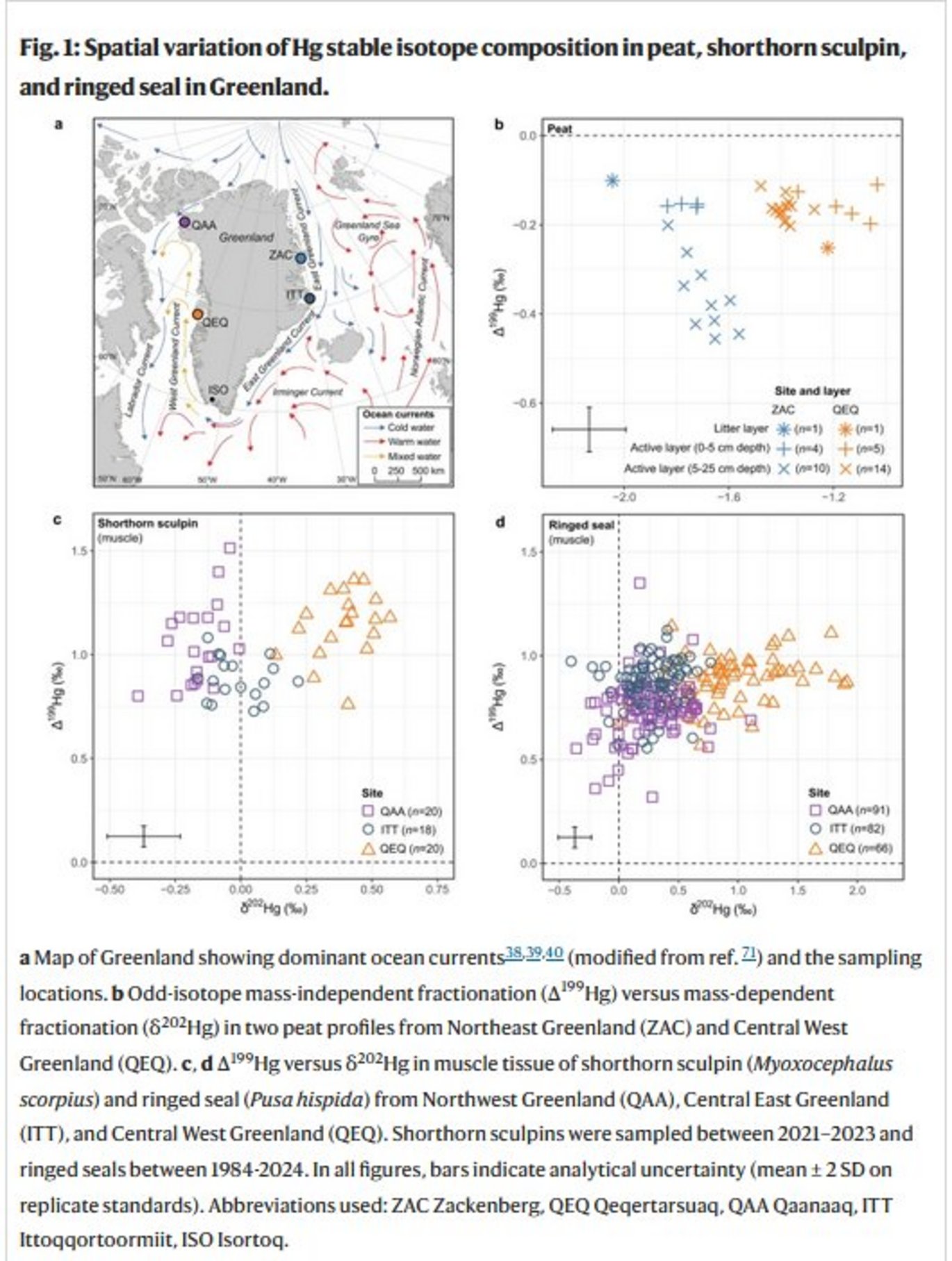Stable isotopes unveil ocean transport of legacy mercury into Arctic food webs
New publication by Jens Søndergaard, Bo Elberling, Christian Sonne, Martin Mørk Larsen, Rune Dietz

Abstract:
Anthropogenic activities have caused large-scale mercury (Hg) pollution in the Arctic reaching toxic levels, but knowledge of sources and pathways is sparse. Here, we present Hg stable isotope data in peat and key aquatic predatory species collected across Greenland. We observe distinct regional differences with significantly lower total Hg and higher δ202Hg in central-western versus northern-eastern Greenland influenced by different ocean currents. While Δ200Hg shows that atmospheric Hg deposition occurs predominantly (60–97%) as Hg(0), Δ199Hg reveals marked photochemical demethylation in especially freshwater habitats. We find δ202Hg in muscle tissue to increase with trophic level linked to internal metabolic transformation. Finally, we observe significant increases in total Hg and δ202Hg for several species/sites during the past 40 years, suggesting an increase in anthropogenic Hg sources and/or change in environmental processes. These findings show that ocean currents carrying large inventories of legacy Hg may be the dominant pathway driving present Hg uptake in Arctic marine and coastal areas. This explains the discrepancy between decreasing atmospheric Hg deposition in the Arctic in recent decades due to reduced global anthropogenic emissions, and the lack of response or increases in Hg-loads in many Arctic species, with implications for effectiveness evaluation of the Minamata Convention.
